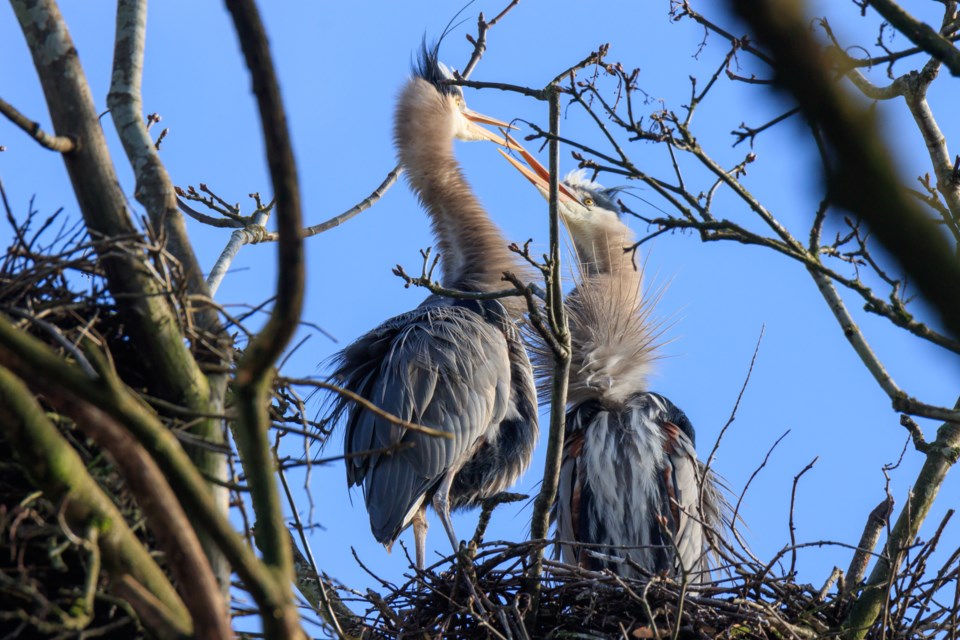The Stanley Park herons have returned for the 20th consecutive year in the park.
The Pacific Great Blue herons began returning to the stand of trees next to the �鶹��ýӳ��Park Board office last week.
According to the park board, last year there were an estimated 82 active nests in the colony, three fewer than in 2018. However, those 82 nests resulted in 112 fledglings, 14 more than the year before.
The Stanley Park colony is one of the largest urban colonies in North America.
“The number of active nests and fledglings raised last year is consistent with previous years indicating the nesting site it favourable to the herons’ breeding success,” park board chair Camil Dumont said in a press release.
Residents can get a closer look at the herons’ nesting activity throughout the breeding season with the park board’s Heron Cam.
��
The herons’ are returning to the park earlier this year. According to the Stanley Park Heronry Annual Report, last year colder temperatures persisted into March, delaying the birds’ return.
Previous colony records show the herons arrived by mid-February, with the earliest recorded date being January 15.
In previous years, the first eggs were spotted by the end of March, with the first hatchlings emerging a month later. Heron fledglings usually leave after 60 days, or eight to nine weeks from hatching.
This year, the Park Board will offer a moderated Facebook Live Q&A, where Stanley Park Ecology Society staff will answer questions about the herons. SPES will set up a weekly in-person interpretation at the colony to answer questions and share colony news. Those interested can follow the Park Board and SPES pages on Facebook to receive updates.
The herons are long-time residents of Stanley Park. The first documented breeding in the park was in 1921 near Brockton Point. They moved into the current location in 2001.
View the Heron Cam online at .
@JessicaEKerr



